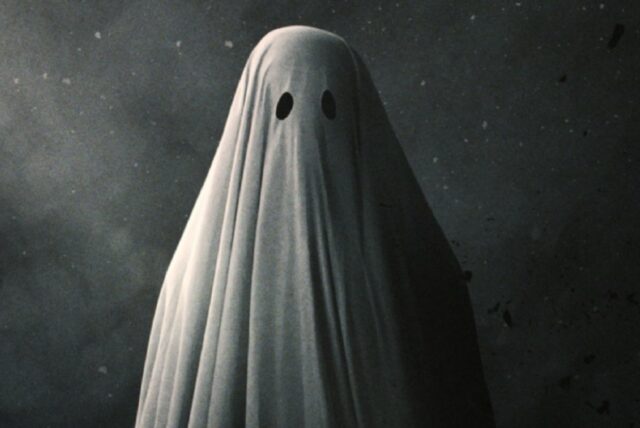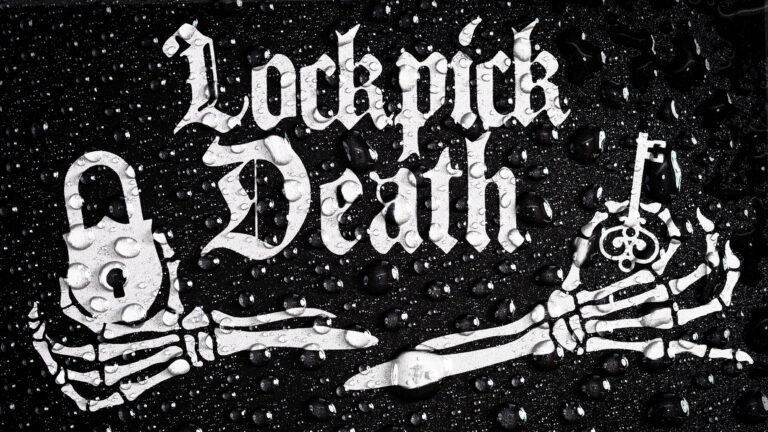The Uninvited<\/em> to Crimson Peak<\/em>, these films will help you set the tone for spooky season.”,”image_url”:”https:\/\/cdn.arstechnica.net\/wp-content\/uploads\/2025\/10\/ghostTOP-500×500-1759590533.jpg”,”listing_image_url”:”https:\/\/cdn.arstechnica.net\/wp-content\/uploads\/2025\/10\/ghostTOP-768×432-1759590541.jpg”}”>
Skip to content
From The Uninvited to Crimson Peak, these films will help you set the tone for spooky season.
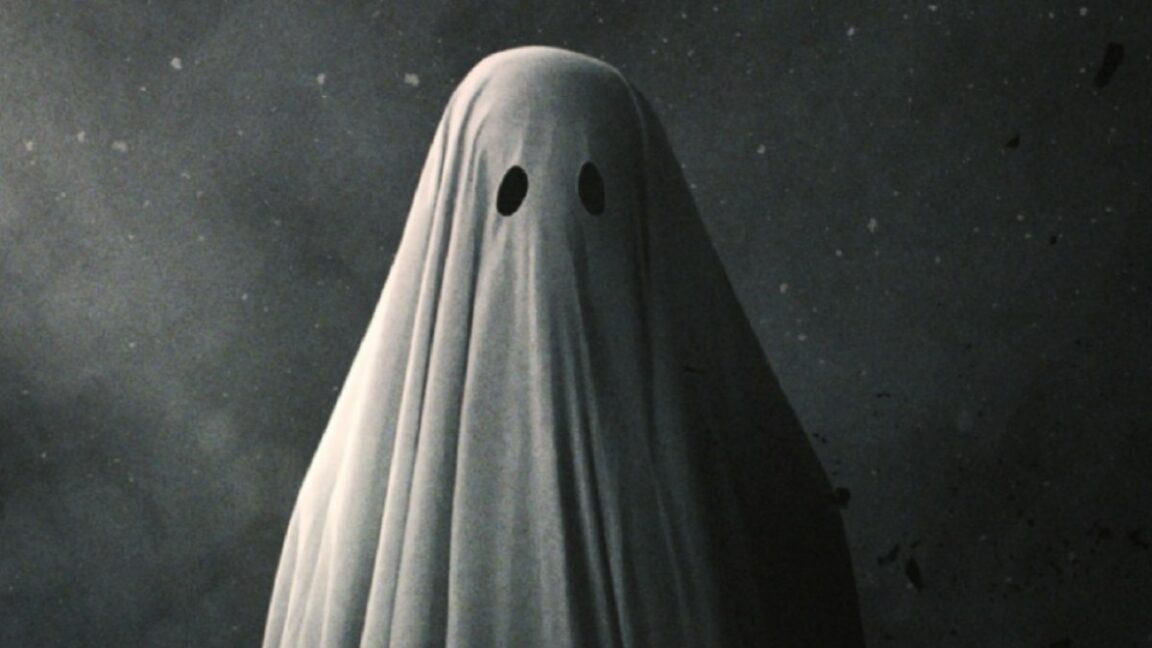
It’s spooky season, and what better way to spend Halloween weekend than settling in to watch a classic Hollywood ghost story? To help you figure out what to watch, we’ve compiled a handy list of 15 classic ghost stories, presented in chronological order.
What makes a good ghost story? Everyone’s criteria (and taste) will differ, but for this list, we’ve focused on more traditional elements. There’s usually a spooky old house with a ghostly presence and/or someone who’s attuned to said presence. The living must solve the mystery of what happened to trap the ghost(s) there in hopes of setting said ghost(s) free. In that sense, the best, most satisfying ghost stories are mysteries—and sometimes also love stories. The horror is more psychological, and when it comes to gore, less is usually more.
As always, the list below isn’t meant to be exhaustive. Mostly, we’re going for a certain atmospheric vibe to set a mood. So our list omits overt comedies like Ghostbusters and (arguably) Ghost, as well as supernatural horror involving demonic possession—The Exorcist, The Conjuring, Insidious—or monsters, like The Babadook or Sinister. Feel free to suggest your own recommendations in the comments.
(Various spoilers below, but no major reveals.)
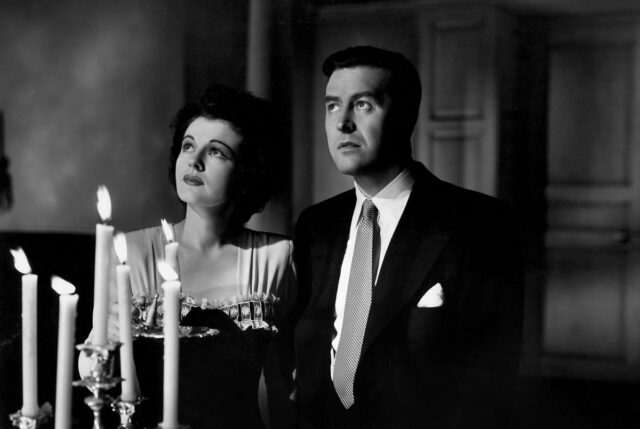
Credit:
Paramount Pictures
Brother and sister Rick and Pamela Fitzgerald (Ray Milland and Ruth Hussey) fall in love with an abandoned seaside abode called Windward House while vacationing in England. They pool their resources and buy it for a very low price, since its owner, Commander Beech (Donald Crisp), is oddly desperate to unload it. This upsets his 20-year-old granddaughter, Stella (Gail Russell), whose mother fell to her death from the cliffs near the house when Stella was just a toddler.
Rick, a musician and composer, becomes infatuated with the beautiful young woman. And before long, strange phenomena begin manifesting: a woman sobbing, an odd chill in the artist’s studio, a flower wilting in mere seconds—plus, the Fitzgeralds’ dog and their housekeeper’s cat both refuse to go upstairs. Whatever haunts the house seems to be focused on Stella.
The Uninvited was director Lewis Allen’s first feature film—adapted from a 1941 novel by Dorothy Macardle—but it has aged well. Sure, there are some odd tonal shifts; the light-hearted sibling banter between Rick and Pamela, while enjoyable, does sometimes weaken the scare factor. But the central mystery is intriguing and the visuals are striking, snagging an Oscar nomination for cinematographer Charles Lang. Bonus points for the tune “Stella by Starlight,” written specifically for the film and later evolving into a beloved jazz standard, performed by such luminaries as Ella Fitzgerald, Frank Sinatra, Charlie Parker, Chet Baker, and Miles Davis.
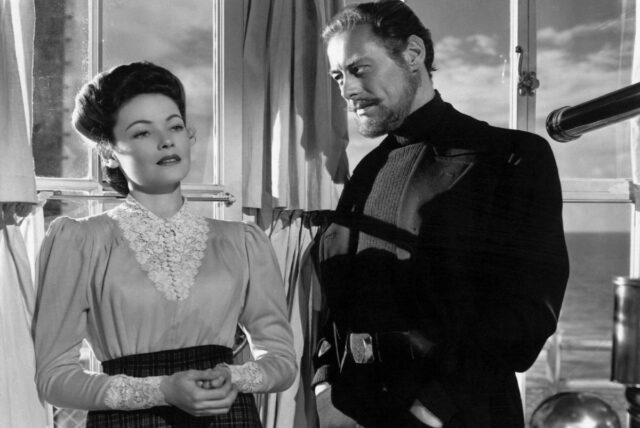
This is one of those old Hollywood classics that has ably withstood the test of time. Gene Tierney stars as the titular Mrs. Lucy Muir, a young widow with a little girl who decides to leave London and take up residence in the seaside village of Whitecliff. She rents Gull Cottage despite the realtor’s reluctance to even show it to her. Lucy falls in love with the house and is intrigued by the portrait of its former owner: a rough sea captain named Daniel Gregg (Rex Harrison), who locals say died by suicide in the house. Gregg’s ghost still haunts Gull Cottage, but he tries in vain to scare away the tough-minded Lucy. The two become friends and start to fall in love—but can any romance between the living and the dead truly thrive?
The Ghost and Mrs. Muir earned cinematographer Charles Lang another well-deserved Oscar nomination. Tierney and Harrison have great on-screen chemistry, and the film manages to blend wry humor and pathos into what is essentially a haunting love story of two people finding each other at the wrong time. There’s no revenge plot, no spine-tingling moments of terror, no deep, dark secret—just two people, one living and one dead, coming to terms in their respective ways with loss and regret to find peace.
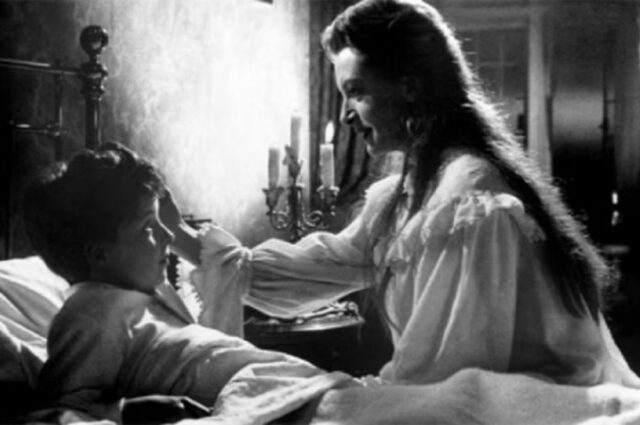
Henry James’ 1898 novella The Turn of the Screw has inspired many adaptations over the years. Most recently, Mike Flanagan used the plot and central characters as the main narrative framework for his Netflix miniseries The Haunting of Bly Manor. But The Innocents is widely considered to be the best.
Miss Giddens (Deborah Kerr) has been hired for her first job as a governess to two orphaned children at Bly Manor, who sometimes exhibit odd behavior. The previous governess, Miss Jessel (Clytie Jessop), had died tragically the year before, along with her lover, Peter Quint (Peter Wyngarde). Miss Giddens becomes convinced that their ghosts have possessed the children so they can still be together in death. Miss Giddens resolves to free the children, with tragic consequences.
Literary scholars and critics have been debating The Turn of the Screw ever since it was first published because James was deliberately ambiguous about whether the governess saw actual ghosts or was simply going mad and imagining them. The initial screenwriter for The Innocents, William Archibald, assumed the ghosts were real. Director Jack Clayton preferred to be true to James’ original ambiguity, and the final script ended up somewhere in between, with some pretty strong Freudian overtones where our repressed governess is concerned.
This is a film you’ll want to watch with all the lights off. It’s dark—literally, thanks to Clayton’s emphasis on shadows and light to highlight Miss Giddens’ isolation. The first 45 seconds are just a black screen with a child’s voice humming a haunting tune. But it’s a beautifully crafted example of classic psychological horror that captures something of the chilly, reserved spirit of Henry James.
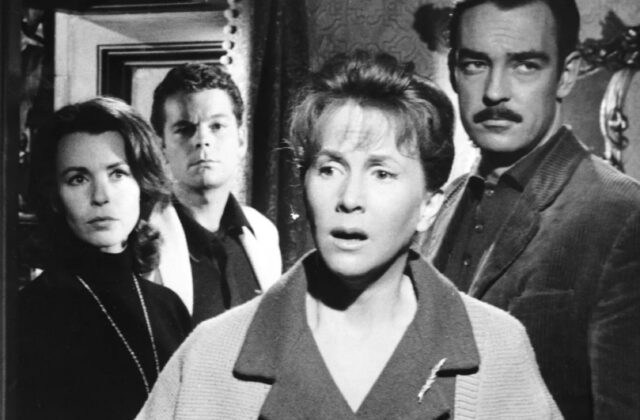
Credit:
Metro-Goldwyn-Mayer
There have also been numerous adaptations of Shirley Jackson’s 1959 Gothic horror novel The Haunting of Hill House, including Mike Flanagan’s boldly reimagined miniseries for Netflix. But many people—Martin Scorsese and Steven Spielberg among them—consider director Robert Wise’s The Haunting to be not only the best adaptation but one of the best horror films of all time. (Please do not confuse the Wise version with the disappointing 1999 remake, which tried to make up for its shortcomings with lavish sets and showy special effects—to no avail.)
Psychologist Dr. John Markaway (Richard Johnson) brings three people to the titular Hill House, intent on exploring its legendary paranormal phenomena. There’s a psychic named Theodora (Claire Bloom); the emotionally vulnerable Eleanor (Julie Harris), who has experienced poltergeists and just lost her domineering mother; and the skeptical Luke (Russ Tamblyn), who will inherit the house when its elderly owner dies. The house does not disappoint, and the visitors experience strange sounds and mysterious voices, doors banging shut on their own, and a sinister message scrawled on a wall: “Help Eleanor come home.”
Initial reviews were mixed, but the film has grown in stature over the decades. Jackson herself was not a fan. Wise did make considerable changes, shortening the backstory and cutting out several characters. He also downplayed the overt supernatural elements in Jackson’s novel, focusing on Eleanor’s mental instability and eventual breakdown. Wise envisioned it as the house taking over her mind. Modern sensibilities accustomed to much more intense horror might not find The Haunting especially scary, but it is beautifully rendered with skillful use of clever special effects. For instance, to make the house seem alive, Wise filmed the exterior shots in infrared to give it an otherworldly vibe, framing the shots so that the windows resemble the house’s eyes.
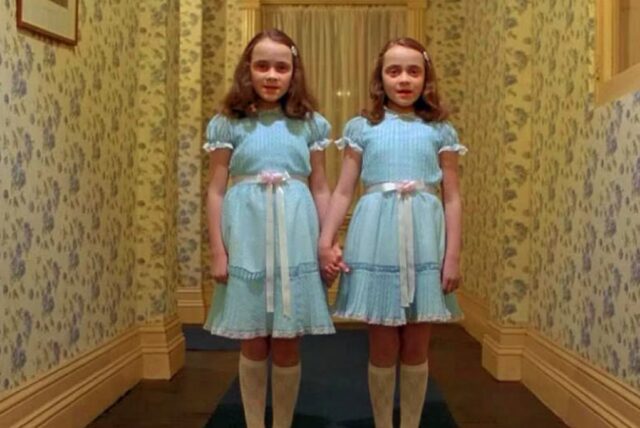
Stanley Kubrick’s adaptation of the 1977 bestselling novel by Stephen King probably needs no introduction. But for those not familiar with the story, Jack Torrance (Jack Nicholson) takes a position as the winter caretaker of the remote Overlook Hotel in the Rocky Mountains, bringing his wife, Wendy (Shelley Duvall), and young son, Danny (Danny Lloyd). Danny has a psychic gift called “the shining,” which allows him to communicate telepathically with the hotel cook, Dick Halloran (Scatman Crothers). The previous caretaker went mad and murdered his family. Over the course of the film, Jack slowly begins to succumb to the same madness, putting his own wife and child in danger.
Initial reviews weren’t particularly favorable—King himself is not a fan of the film—but it’s now considered a horror classic and a subject of much academic study among film scholars. This is another film that has seen a lot of debate about whether the ghosts are real, with some arguing that Jack and Danny might just be hallucinating the Overlook’s malevolent ghosts into existence. Or maybe it’s the hotel manifesting ghosts to drive Jack insane. (I choose to interpret the ghosts in The Shining as real while appreciating the deliberate ambiguity.) There are so many memorable moments: the eerie twin girls (“Come and play with us”), the bathtub lady in Room 237, Lloyd the creepy bartender, the elaborate hedge maze, “REDRUM,” Jack hacking through a door and exclaiming, “Heeere’s Johnny!” and that avalanche of blood pouring down a hotel hallway. It’s a must-watch.
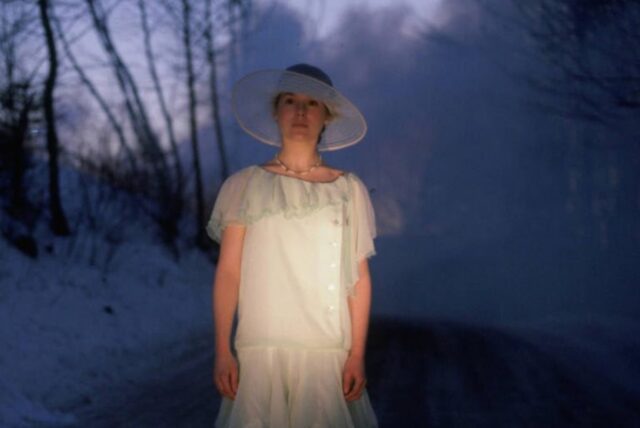
Credit:
Universal Pictures
Adapted from the 1979 novel by Peter Straub, Ghost Story centers on a quartet of elderly men in a New England town called Milburn. They are lifelong friends who call themselves the Chowder Society and gather every week to tell spooky stories. Edward Wanderly (Douglas Fairbanks Jr.) is the town’s mayor; Ricky Hawthorne (Fred Astaire) is a businessman; Sears James (John Houseman) is a lawyer; and John Jaffrey (Melvyn Douglas) is a physician. The trouble starts when Edward’s son, David (Craig Wasson), falls to his death from a New York City high-rise after the young woman he’s engaged to suddenly turns into a putrefying living corpse in their shared bed.
The apparent suicide brings Edward’s other son, Dan (also Wasson), back to Milburn. Dan doesn’t believe his brother killed himself and tells the Chowder Society his own ghost story: He fell in love with a young woman named Alma (Alice Krige) before realizing something was wrong with her. When he broke things off, Alma got engaged to David. And it just so happens that Alma bears a striking resemblance to a young woman named Eva Galli (also Krige) captured in an old photograph with all the members of the Chowder Society back in their youth. Yep, the old men share a dark secret, and the chickens are finally coming home to roost.
I won’t claim that Ghost Story is the best film of all time. It has its flaws, most notably the inclusion of two escaped psychiatric hospital patients purportedly in the service of Eva’s vengeful ghost. The tone is occasionally a bit over-the-top, but the film honors all the classic tropes, and there are many lovely individual scenes. The main cast is terrific; it was the final film for both Astaire and Fairbanks. And that spooky New England winter setting is a special effect all its own. The sight of Eva’s apparition materializing through the swirling snow to stand in the middle of the road in front of Sears’ car is one that has stuck with me for decades.
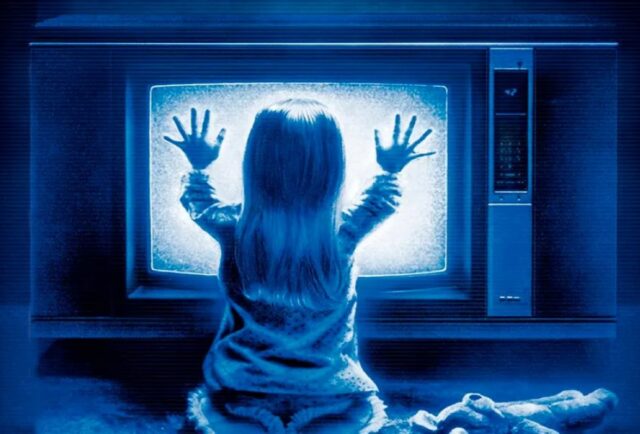
Credit:
MGM/UA Entertainment
“They’re heeere!” That might be one of the best-known movie lines from the 1980s, announcing the arrival of the titular poltergeists. In this Tobe Hooper tale of terror, Steven and Diane Freeling (Craig T. Nelson and JoBeth Williams) have just moved with their three children into a suburban dream house in the newly constructed community of Cuesta Verde, California. Their youngest, Carol Anne (Heather O’Rourke), starts hearing voices in the TV static late at night, and things soon escalate as multiple ghosts play pranks on the family. When Carol Anne mysteriously disappears, Steven and Diane realize at least one of the ghosts is far from friendly and call on local parapsychologists for help.
Steven Spielberg initiated the project, but his obligations to filming E.T. prevented him from directing, although he visited the set frequently. (There’s been considerable debate over whether Hooper or Spielberg really directed the film, but the consensus over time credits Hooper.) Despite the super-scary shenanigans, it definitely has elements of that lighter Spielberg touch, and it all adds up to a vastly entertaining supernatural thriller. Special shoutout to Zelda Rubinstein’s eccentric psychic medium with the baby voice, Tangina, who lends an element of whimsy to the proceedings.
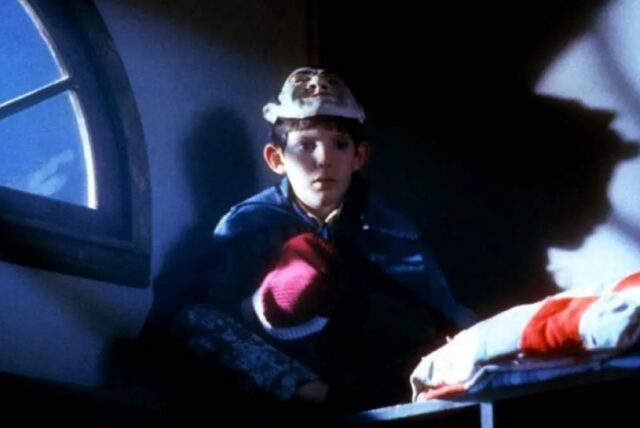
Credit:
New Century Vista Film
As a child actor, Lukas Haas won audience hearts when he played an Amish boy who sees a murder in the 1985 film Witness. Less well-known is his performance in Lady in White, playing 9-year-old Frankie Scarlatti. On Halloween in 1962, school bullies lock Frankie in the classroom coatroom, where he is trapped for the night. That’s when he sees the apparition of a young girl (Joelle Jacobi) being brutally murdered by an invisible assailant. Then an actual man enters, trying to recover something from a floor grate. When he realizes someone is there, he strangles Frankie unconscious; Frankie’s father, Angelo (Alex Rocco), finds and rescues him in the nick of time.
Frankie has a vision of that same girl while unconscious, asking him to help her find her mother. That little girl, it turns out, was one of 11 child victims targeted by a local serial killer. Frankie and his older brother, Geno (Jason Presson), decide to investigate. Their efforts lead to some shocking revelations about tragedies past and present as the increasingly desperate killer sets his sights on Frankie.
Director Frank LaLoggia based the story on the “lady in white” legend about a ghostly figure searching for her daughter in LaLoggia’s hometown of Rochester, New York. Granted, the special effects are cheesy and dated—the director was working with a lean $4.7 million budget—and LaLoggia can’t seem to end the film, adding twist after twist well after the audience is ready for a denouement. But overall, it’s a charming film, with plenty of warmth and heart to offset the dark premise, primarily because the Scarlattis are the quintessential Italian American New England family. Lady in White inexplicably bombed at the box office, despite positive critical reviews, but it’s a hidden 1980s gem.
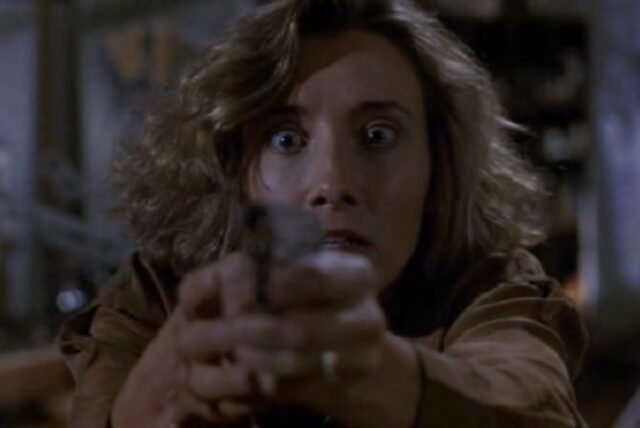
Credit:
Paramount Pictures
In 1948, a composer named Roman Strauss is convicted of brutally stabbing his pianist wife, Margaret, to death with a pair of scissors and is executed. Over 40 years later, a woman (Emma Thompson) shows up with amnesia and is unable to speak at a Catholic orphanage that just happens to be the old Strauss mansion. The woman regularly barricades her door at night and inevitably wakes up screaming.
The nuns ask private investigator Mike Church (Kenneth Branagh) to find out her identity. Antiques dealer and hypnotist Franklyn Madson (Derek Jacobi) offers his assistance to help “Grace” recover her memory. Madson regresses her to a past life—that of Margaret and Roman Strauss’s doomed marriage. The truth about what really happened in 1948 unfolds in a series of black-and-white flashbacks—and they just might be the key to Grace’s cure.
As director, Branagh drew influences from various Hitchcock films, Rebecca, and Citizen Kane, as well as the stories of Edgar Allen Poe. The film is tightly written and well-plotted, and it ably balances suspense and sentiment. Plus, there are great performances from the entire cast, especially Robin Williams as a disgraced psychiatrist now working in a grocery store.
Some might question whether Dead Again counts as a bona fide ghost story instead of a romantic thriller with supernatural elements, i.e., hypnotherapy and past-life regression. It’s still two dead lovers, Roman and Margaret, reaching through the past to their reincarnated selves in the present to solve a mystery, exact justice, and get their happily ever after. That makes it a ghost story to me.
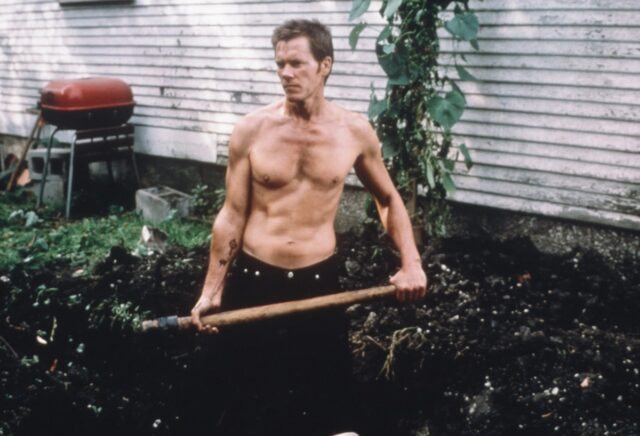
Credit:
Artisan Entertainment
Stir of Echoes is one of my favorite Kevin Bacon films, second only to Tremors, although it hasn’t achieved the same level of cult classic success. Bacon plays Tom Witzky, a phone lineman in a working-class Chicago neighborhood. He loves his wife Maggie (Kathryn Erbe) and son Jake (Zachary David Cope), but he struggles with the fact that his life just isn’t what he’d imagined. One night, he agrees to be hypnotized by his sister-in-law (Illeana Douglas) after mocking her belief in the paranormal. This unlocks latent psychic abilities, which he shares with his far more gifted son, and he begins having disturbing visions of a young girl who disappeared from the neighborhood the year before. Naturally, Tom becomes obsessed with solving the mystery behind his intensifying visions.
Based on a novel by Richard Matheson, director David Koep drew on films like Repulsion, Rosemary’s Baby, and The Dead Zone for tonal inspiration, but Stir of Echoes still falls firmly into the ghost story genre. It’s just grounded in an ordinary real-world setting that makes the spooky suspense all the more effective, further aided by Bacon inhabiting the role of Tom so effortlessly that he barely seems to be acting. Alas, the film suffered at the box office and from unfavorable (and unfair) contemporary comparisons to The Sixth Sense (see below), released that same year. But it’s well worth a watch (and a rewatch).
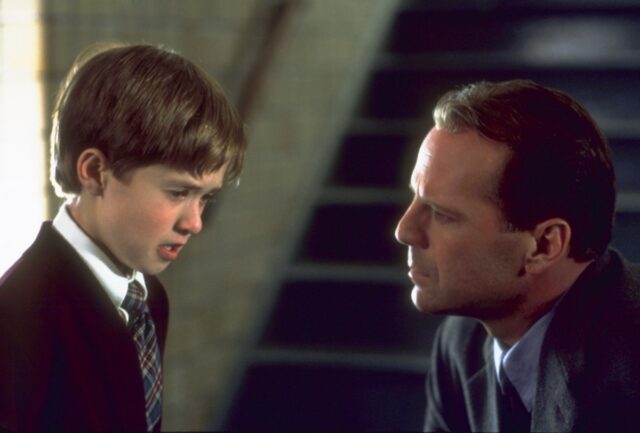
Credit:
Buena Vista Pictures
This is the film that launched director M. Night Shyamalan’s career, snagging him two Oscar nominations in the process. Child psychologist Malcolm Crowe (Bruce Willis) is shot by a troubled former patient, Vincent (Donnie Wahlberg), one night at home. A year later, he has a new case with striking similarities—9-year-old Cole Sears (Haley Joel Osment)—and devotes himself to helping the boy, as a way to atone for his failure to help Vincent. Malcolm thinks Cole’s problems might be even more severe, especially when Cole confesses (in a famous scene), “I see dead people.” And those dead people can be really scary, especially to a 9-year-old boy.
The Sixth Sense was a massive hit, grossing over $672 million globally, fueled in part by a jolting final plot twist that hardly anyone saw coming. But it’s Osment’s astonishing performance as Cole that anchored it all and marked the young actor as a rising talent. (It’s also one of Willis’ best, most nuanced performances.) Shyamalan has made many films since, and several are really good, but none have ever come close to this one.
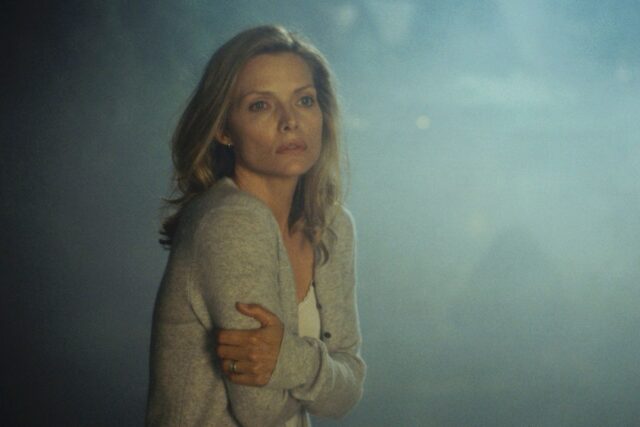
Credit:
DreamWorks Pictures
A luminous Michelle Pfeiffer stars as Claire Spencer, a gifted cellist who gave up her career for marriage to scientist Norman Spencer (Harrison Ford) and motherhood. But when their daughter goes off to college, Claire finds herself struggling to cope, particularly since there are tensions in her marriage. Plus, she’s still recovering psychologically from a car accident the year before, of which she has no memory. When mysterious psychic disturbances begin to manifest, Claire is convinced the ghost of a young woman is haunting her; everyone else thinks she’s just dealing with delayed grief and trauma. Claire nonetheless slowly begins to uncover the truth about the mysterious presence and her accident—and that truth just might end up costing her life.
What Lies Beneath started out as a treatment for Steven Spielberg, who envisioned something along the lines of a ghost story equivalent to Close Encounters of the Third Kind—primarily about discovery and first contact, while also exploring the psychological state of a new empty nester. But Spielberg ultimately passed on the project and handed it over to director Robert Zemeckis, who turned it into a psychological thriller/ghost story with a Hitchcockian vibe. Those earlier elements remain, however, and the leisurely pacing helps develop Claire as a character and gives Pfeiffer a chance to show off her acting chops, not just her exquisite beauty. It’s broody and satisfying and a perennial seasonal favorite for a rewatch.
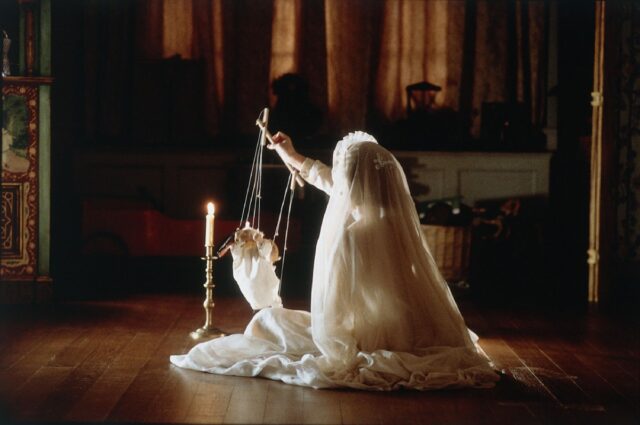
This film might be director Alejandro Amenábar’s masterpiece, merging the sensibilities of arthouse cinema with mainstream movie-making. A young mother named Grace (Nicole Kidman) and her two children are living in a remote house on the Channel Island of Jersey, recently liberated from German occupation at the end of World War II. The house is kept in near darkness at all times because the children have a severe sensitivity to light. But there are disturbances in the house that Grace fears may be evidence of a haunting, and the three creepy new servants she hired seem to have ulterior motives for being there. And just who is buried in the small, overgrown cemetery on the grounds?
Much of the film’s success is due to Kidman’s incredibly disciplined, intense performance as the icily reserved, tightly wound Grace, whose gradual unraveling drives the plot. It’s a simple plot by design. All the complexity lies in the building tension and sense of oppressiveness, augmented by Amenábar’s claustrophobic sets and minimalist lighting of sepia-toned scenes. It all leads up to a chilling climax with an appropriately satisfying twist.
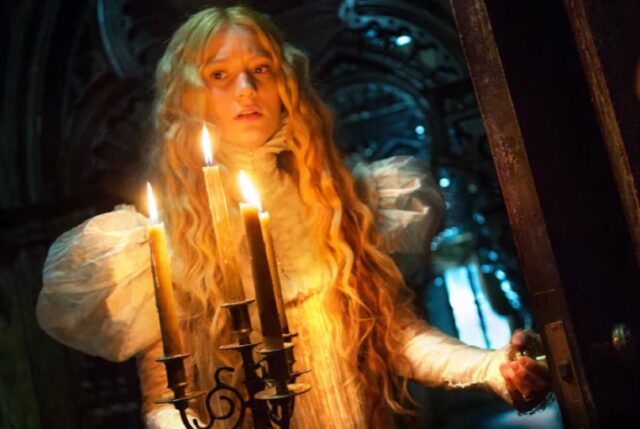
Credit:
Universal Pictures
Guillermo del Toro has always had an extraordinary knack for lush visuals teeming with Gothic elements. The director went all in on the Gothic horror for this ghostly tale of a Victorian-era American heiress (Mia Wasikowska) who weds a handsome but impoverished English nobleman, Sir Thomas Sharpe (Tom Hiddleston). Edith finds herself living in his crumbling family mansion, which is definitely haunted. And Edith should know. She’s had ghostly visits from her dead mother since childhood, warning her to “beware of Crimson Peak,” so she’s sensitive to haunted vibes.
Edith really should have listened to her mother. Not only is Thomas strangely reluctant to consummate their marriage, but his sister, Lucille—played to perfection by Jessica Chastain—is openly hostile and might just be slipping a suspicious substance into Edith’s tea. Will Edith uncover the dark secret of Crimson Peak and escape a potentially terrible fate? Del Toro set out to put a modern twist on the classic haunted house genre, and he succeeded, drawing on several other films on this list for inspiration (The Haunting, The Innocents, and The Shining, specifically). But at its heart, Crimson Peak is pure del Toro: sinister, atmospheric, soaked in rich colors (and sometimes blood), with a spectacular payoff at the end.
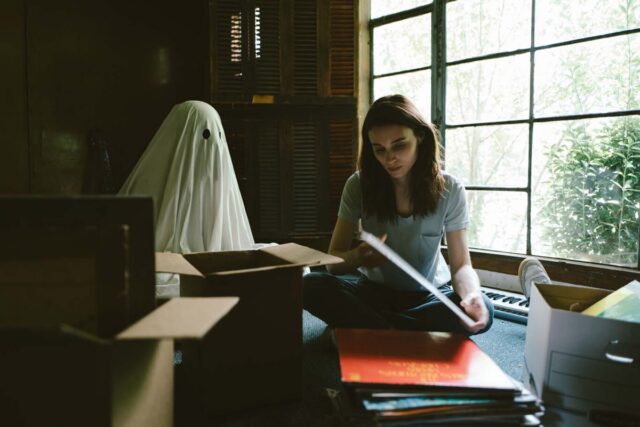
This is probably the most unconventional approach to the genre on the list. Casey Affleck and Rooney Mara play a husband and wife known only as C and M, respectively, who have been at odds because M wants to move and C does not. Their house isn’t anything special—a small ranch-style affair in a semi-rural area—but it might be haunted.
One night, there is a mysterious bang, and the couple can’t locate the source when they search the house. Then C is killed in a car accident, his body covered with a sheet at the hospital morgue. C rises as a ghost, still wearing the sheet (now with two eyeholes) and makes his way back to the house, where he remains for a very long time, even long after M has moved out. (There’s also another ghost next door in a flowered sheet, waiting for someone it can no longer remember.)
There is almost no dialogue, Affleck spends most of the movie covered in a sheet, there is very little in the way of a musical soundtrack, and the entire film is shot in a 1.33:1 aspect ratio. Director David Lowery has said he made that choice because the film is “about someone trapped in a box for eternity, and I felt the claustrophobia of that situation could be amplified by the boxiness of the aspect ratio.” Somehow it all works. A Ghost Story isn’t about being scary; it’s a moody, poignant exploration of love lost—and it takes the audience to some conceptual spaces few films dare to tread.
